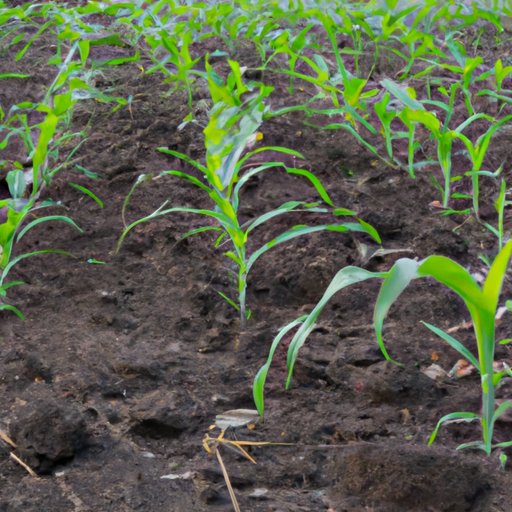
Introduction
Corn is one of the most versatile and widely cultivated crops in the world. From sweet corn on the cob to popcorn, cornmeal, and even ethanol, corn plays an important role in our diets and economy. If you’re interested in growing your own corn, whether for personal consumption or as a cash crop, there are some important things you need to know to ensure a successful harvest. In this article, we’ll explore how to choose the right type of corn for your region, prepare the soil, plant the seeds, care for the plants, and harvest your corn. Let’s dive in.
Choosing the right type of corn for your region
Not all corn varieties are created equal, and choosing the right type of corn for your region is critical to a successful harvest. Some types of corn do better in cool climates, while others thrive in hot, humid conditions. Similarly, some corn varieties prefer loamy soil, while others can adapt to sandy or clay soils. Some popular corn varieties to consider include:
– Sweet corn: This is the type of corn most commonly eaten as a vegetable. It’s harvested when the kernels are still in the milk stage and are sweet and tender.
– Dent corn: Dent corn is used for animal feed and industrial purposes, such as ethanol production. It gets its name from the dent that forms on the top of each kernel when it’s fully ripe.
– Flour corn: Flour corn has soft, starchy kernels and is used primarily for cornmeal, tortillas, and other baked goods.
– Popcorn: As the name suggests, popcorn is the type of corn used for making popcorn.
When choosing a variety of corn to plant, consider your region’s climate, the length of your growing season, and the type of soil you have. Your local cooperative extension service can offer advice on the best corn varieties for your area.
Preparing the soil for planting
Corn is a heavy feeder and requires fertile soil to grow well. Before planting, it’s important to prepare your soil to ensure optimal growing conditions. Start by testing your soil’s pH level and fertility. You can do this with a soil test kit or by sending a soil sample to a lab for analysis.
Once you know your soil’s needs, you can amend it accordingly. Adding organic matter, such as compost or well-rotted manure, can improve soil structure and fertility. Other amendments that can be used include bone meal, blood meal, and fish emulsion. Follow the package instructions for application rates and timing.
Planting the corn seeds
It’s best to plant corn seeds when the soil has warmed up to at least 60°F, which is typically a few weeks after the last frost date in your area. To ensure good seed-to-soil contact, plant the seeds about 1 inch deep and 6-12 inches apart, depending on the variety. Rows should be spaced 30-36 inches apart. Planting in blocks rather than rows can increase pollination rates and improve yields.
Once the seeds are planted, water them thoroughly and continue to keep the soil moist but not waterlogged. Corn requires about 1-2 inches of water per week, either from rainfall or irrigation.
Caring for the corn plants
Corn plants are susceptible to a number of pests and diseases, including corn borers, Japanese beetles, and rust. To prevent these problems, practice good garden hygiene by removing plant debris and controlling weeds. You can also use natural pest control methods, such as releasing beneficial insects or using organic insecticides.
In addition to pest and disease control, it’s important to provide your corn plants with adequate water and nutrients. Fertilize the plants with a balanced fertilizer once a month, following the package instructions for rates and timing. Corn plants also benefit from a side-dressing of nitrogen fertilizer when they reach knee-high.
Harvesting the corn
Sweet corn is typically ready to harvest about 20 days after the silks appear. To check for ripeness, gently peel back the husk and examine the kernels. They should be plump and tender, with a milky liquid present. If the kernels are still doughy or the liquid is clear, the corn is not yet ripe.
When harvesting, twist the ear downward and give it a sharp tug to separate it from the stalk. Avoid pulling too hard, as this could damage the plant. Once harvested, corn can be eaten fresh, canned, frozen, or dried for later use.
Conclusion
Growing corn can be a rewarding experience, but it requires careful planning and attention to detail. By choosing the right type of corn for your region, preparing the soil, planting the seeds correctly, and providing proper care throughout the growing season, you can enjoy a bountiful harvest of delicious, nutritious corn. Don’t be afraid to experiment with different varieties and techniques to find what works best for you.




